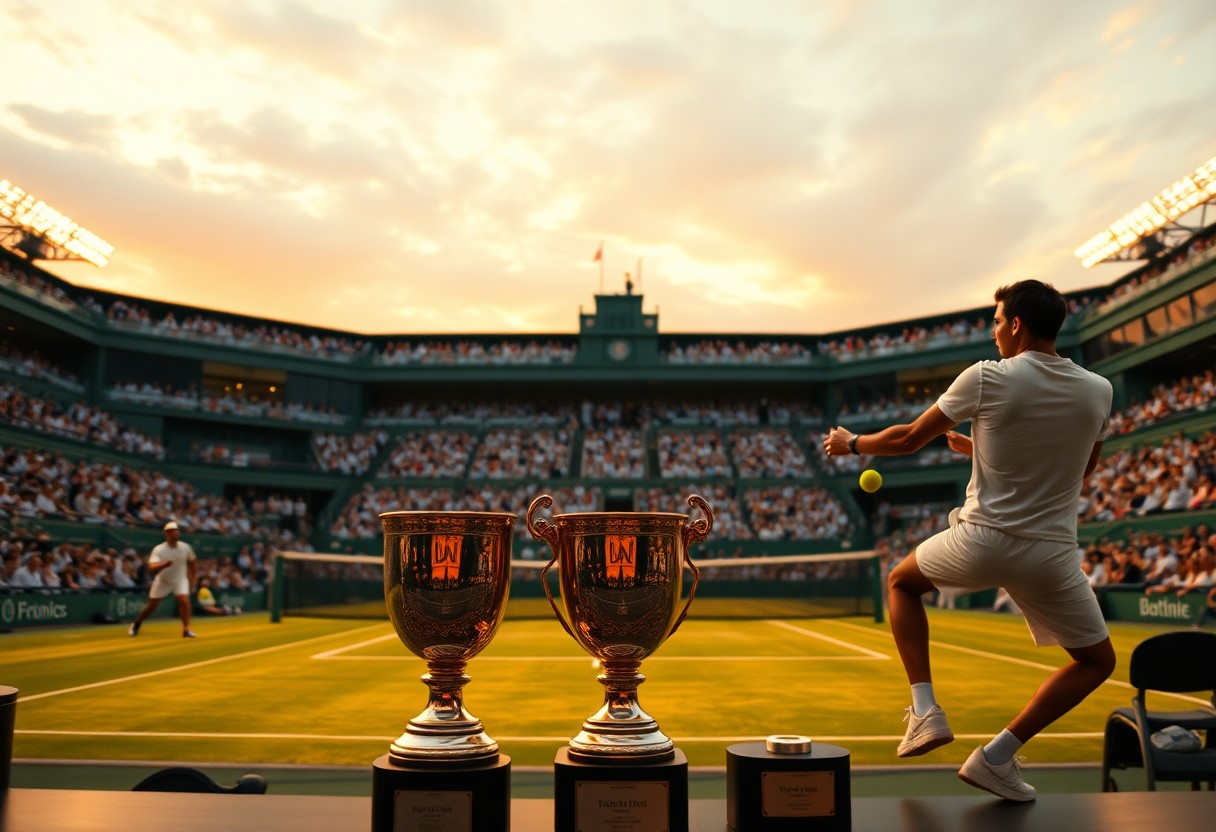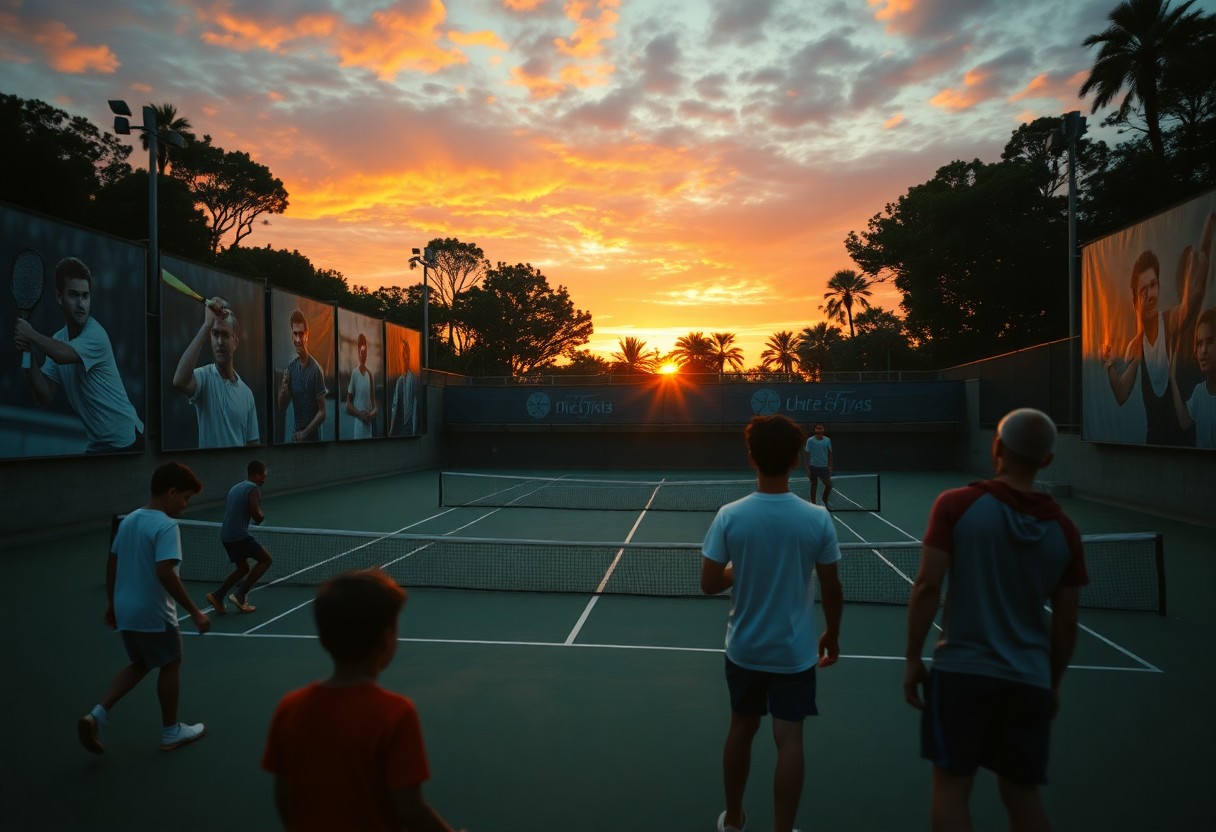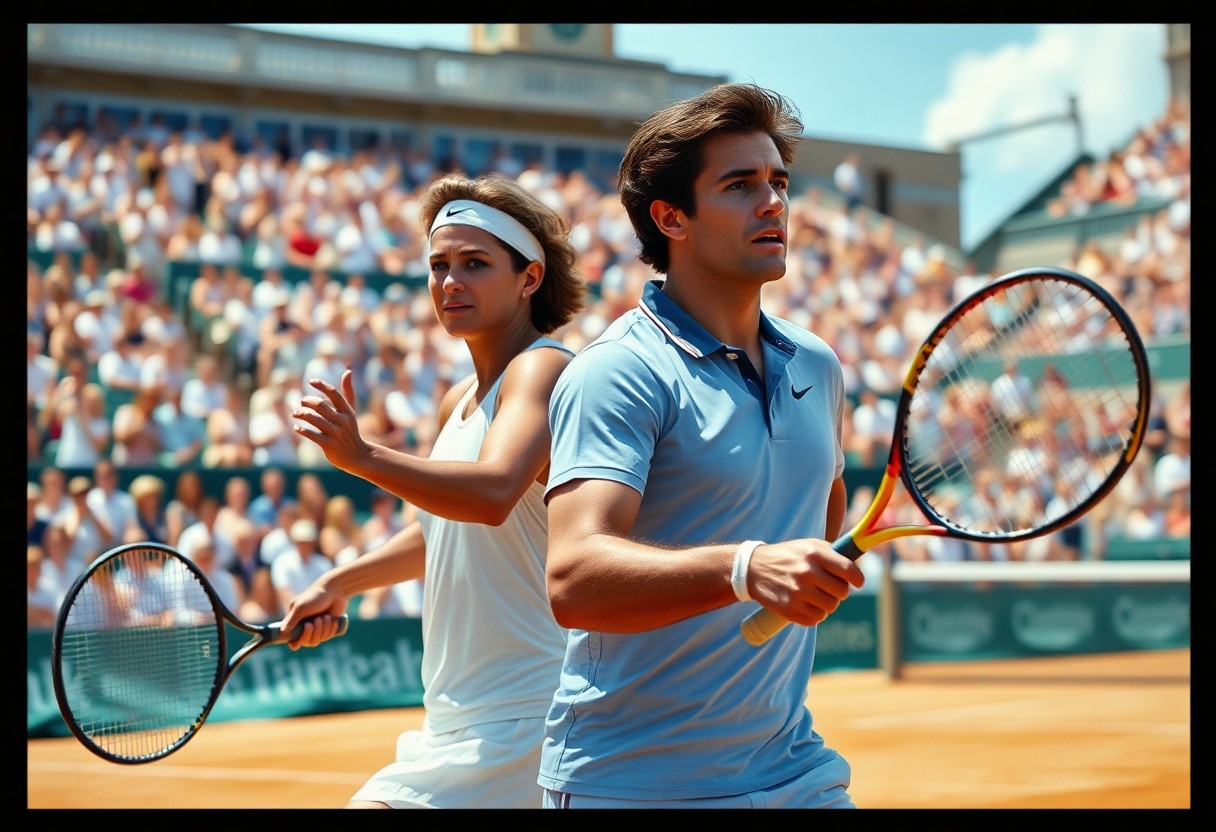You step into the charged arena of professional tennis, where rivalries do more than decide trophies — they ignite passionate, worldwide fan battles. Understanding how media narratives amplify national pride, how heated debates and trolling can produce dangerous online clashes, and how shared enthusiasm also creates uniting moments helps you analyze fan dynamics and sharpen your understanding with authority and nuance.
The Nature of Tennis Rivalries
You judge a rivalry by repeated, high-stakes meetings, stylistic contrasts and memorable matches: think Federer vs Nadal, who met 40 times across Grand Slams and big finals. Records, slam-deciding sets and surface dominance turn routine matches into narratives you follow obsessively. Head-to-head history, iconic moments and trophy swings are the metrics that transform two great players into a true rivalry that divides fans.
Historical Context and Evolution
Open Era tennis from 1968 onward professionalized schedules and increased repeat matchups; Evert–Navratilova in the 1970s–80s and Borg–McEnroe at 1980 Wimbledon are textbook examples. Broadcast expansion and year-round tours created more rematches, so you started seeing loyalties harden as media replayed decisive encounters and built long-term storylines. Television exposure and repeat finals hardened fan camps.
Deeper shifts changed how you experience rivalries: the Open Era (1968) brought consistent prize money and global calendars so top players met frequently, while surfaces and racket technology altered who had the edge. Evert and Navratilova met roughly 80 times, giving fans extended arcs; Federer–Nadal’s 40 meetings produced the 2008 Wimbledon classic that still shapes opinions. Social media from the mid‑2000s onward turned private opinions public, amplifying praise and abuse alike, and events like Davis Cup or the Olympics inject national pride that can escalate tensions. That means rivalries now generate big commercial value, intense online fan camps and, at times, volatile fan behavior you need to navigate as a spectator or commentator.
Global Fan Engagement
Social platforms turn match moments into global flashpoints: you watch a rally clip go viral within minutes, hashtags like #TeamFederer or #TeamNadal trend during Slams, and classic matches such as the 2008 Wimbledon final keep resurfacing on TikTok and YouTube. Real-time polls, short-form highlights, and influencer commentary can amplify viewership and narratives, but that viral amplification also magnifies toxic behavior and coordinated attacks when moderation lags.
Fan Interaction and Community Building
Fan communities organize beyond comments: you join subreddits, Telegram groups, or official fan clubs—nicknames like “Nole’s supporters” and “Rafa’s Army” become identity badges—swapping tactical analysis, planning watch parties, and trading memorabilia. These networks often convert online passion into physical presence at stadiums and local screenings, and they sustain storylines that shape player reputations across media cycles.
Community leaders and moderators play an outsized role: you’ll find admins running polls, vetting newcomers, and staging charity auctions of signed gear that support player foundations such as Nadal’s and Djokovic’s. Fan-driven initiatives also influence sponsors and broadcasters by demonstrating engagement metrics, while poorly moderated groups can spiral into doxxing or coordinated harassment—so effective moderation and transparent rules keep engagement productive and reduce the risk of reputational harm.
Major Rivalries That Shaped the Sport
You’ve seen several head-to-head feuds that rewired tennis economics and fandom: Federer–Nadal met 40 times (Nadal 24–16), producing the epic 2008 Wimbledon final (4h48m); Djokovic–Nadal produced the 2012 Australian Open marathon (5h53m); Borg–McEnroe and the Williams sisters forced cultural conversations beyond courts. These matchups drove TV scheduling, sponsorship strategies, and national fan blocs that still spark heated debates at every Slam.
Classic Matches and Their Impact
You can point to specific contests that changed perceptions: the 2008 Wimbledon final (Nadal–Federer, 4h48m) reset what a “greatest match” looked like, while the 2012 Australian Open (Djokovic–Nadal, 5h53m) redefined physical limits. The 1980 Wimbledon tiebreak between Borg and McEnroe (18–16) fueled mainstream interest. Broadcasters adjusted prime slots and tournament organizers tightened scheduling after these high-profile clashes, altering how you experience Grand Slams.
Iconic Players and Their Fanbases
You notice distinct tribes around stars: Federer’s followers prize elegance and sportsmanship, Nadal’s fans celebrate clay-court ferocity, Djokovic’s supporters emphasize resilience, and the Williams sisters command a vast, passionate American and global audience. These camps show up loud and visible at Slams, creating audible divisions and intense atmospheres that can sway momentum and media narratives.
Looking closer, fan identity has measurable effects: Federer–Nadal’s 40 meetings became recurring social-media spectacles and stadium sellouts; the Williams sisters’ rivalry—played out in multiple Grand Slam finals—drove U.S. viewership spikes and sponsorship activations. You’ll also find brands deliberately courting camps, while tournaments enforce conduct policies to curb online flame wars and heated crowd behavior that sometimes spill into officiating controversies.
Psychological Aspects of Fan Wars
You notice how rivalries activate the same group dynamics studied in social psychology: in-group loyalty, out-group derogation, and emotional contagion. High-stakes matches like the 2008 Wimbledon final or the 2012 Australian Open marathon create memories that anchor identity; fans replay clips, join forums, and defend players for years. Media highlights and viral clips turn single matches into long-term narratives, so your reactions shift from match-to-match fandom into sustained social allegiance that feeds online and offline conflict.
Loyalty and Identity
You adopt player traits as extensions of your self: Federer’s elegance becomes your aesthetic preference, Nadal’s grit maps onto your work ethic, and Djokovic’s resilience shapes your appetite for debate. Visible markers—jerseys, chants, signature hashtags like #TeamFederer—signal membership and invite policing of boundaries. Fan clubs, local viewing parties, and charity events convert casual support into organized loyalty, increasing the likelihood you’ll defend the player aggressively in comments and comment threads.
The Impact of Media Narratives
You consume narratives that simplify rivalry into moral dramas—heroes, villains, comebacks, and betrayals. Outlets and commentators frame incidents (medical timeouts, trash-talk, on-court celebrations) into stories that amplify emotions; editorial slants have historically recast the same act differently across regions, intensifying partisan reactions. These frames push fans toward polarized interpretations and often determine which incidents you’ll amplify or ignore on social platforms.
Delving deeper, you can trace how coverage mechanics escalate disputes: mainstream headlines, pundit cycles, and algorithmic boosts on X and TikTok prioritize sensational angles, producing measurable spikes in engagement after controversy. The 2012 AO clash’s long-form analyses and the 2008 Wimbledon narrative shows resulted in weeks of commentary; search interest and clip shares surge within hours, creating feedback loops. That amplification enables both positive outcomes—charitable collaborations, record ticket sales—and risks like coordinated harassment and entrenched echo chambers that make reconciliation between fan groups much harder.
Economic Implications
You feel the financial ripple of a heated rivalry the moment tickets go on sale: Centre Court at Wimbledon holds about 14,979 fans and Arthur Ashe Stadium about 23,771, and Grand Slam fortnights can attract roughly 500,000 spectators collectively, driving ticket, hospitality, and local tourism revenue. Broadcast rights and secondary markets surge around marquee matchups, so your city, vendors, and media partners often see multi-million-dollar spikes tied directly to headline rivalries.
Merchandise and Revenue Streams
You watch merchandise lines lengthen for rivalry weekends as brands push replica kits, limited-edition tennis gear, and co-branded items. Replica racquets and apparel remain high-margin sellers, and tournaments monetize exclusives through pop-up shops and e-commerce, with merchandise routinely accounting for a double-digit share of event retail income while resale markets can multiply original prices within hours of big wins.
Sponsorship and Advertising
You notice sponsors pay premium rates for ad inventory around headline matches because viewership and social engagement spike dramatically. High-profile endorsements drive value: for example, Roger Federer’s 2018 deal with Uniqlo was reported at roughly $300 million over 10 years, illustrating how elite players tied to enduring rivalries command massive commercial leverage and extended brand exposure.
You also see brands activate beyond logo placement, funding on-site fan experiences, digital campaigns, and data-driven retargeting to convert impressions into sales. Luxury partners like Rolex and apparel giants deploy hospitality suites and influencer tie-ins during rivalry finals, while sponsors measure ROI through TV rating lifts, social media reach, and post-event sales data to justify multi-year, seven-figure commitments.
Future of Tennis Rivalries
Expect rivalries to be reshaped by calendar changes, team events and streaming windows, so that you watch matches across more time zones and platforms. Events like the 2024 Paris Olympics, expanded Davis Cup ties and the Laver Cup will keep individual feuds alive inside national and continental storylines, while broadcasters and sponsors chase new audiences with shorter clips and live stats that push fan allegiances into faster, more global cycles.
Emerging Players and New Dynamics
Young stars such as Carlos Alcaraz, Iga Świątek, Jannik Sinner and Coco Gauff bring contrasting styles—power, variety, court craft—and drive fresh rivalries you follow closely. Alcaraz’s five-set win over Novak Djokovic at Wimbledon 2023 is a recent case showing how quickly a rivalry can ignite. As you track under-25 leaders, rapid generational turnover creates matchups that swap narratives every Grand Slam.
The Evolution of Fan Wars in a Global Context
Fan wars now move with real-time edits, highlights and memes across platforms like TikTok, X and Discord, so you experience loyalties that cross borders but also fragment into niche communities. Organized fan campaigns can amplify praise or weaponize criticism, and that online intensity often spills into sponsorship decisions and broadcasting narratives.
Diving deeper, you can point to concrete patterns: viral clips from Grand Slams produce hashtag storms within minutes, influencers reframe match moments for regional audiences, and fan-run streams aggregate commentary for millions. Tournament organizers and players face pressure from both positive mobilization—crowd-building at specific matches—and negative outcomes, including coordinated abuse; platforms and governing bodies are testing moderation and policy responses to keep rivalries competitive rather than destructive.
Final Words
Ultimately you see how intense matchups, contrasting personalities and national pride turn tennis rivalries into global fan wars; they push you to pick sides, shape your identity as a supporter, and fuel conversations across social media, sports bars and living rooms, making the sport more dramatic, marketable and socially engaging than individual matches alone.




